 Get up close and personal with the sex and violence
Get up close and personal with the sex and violence
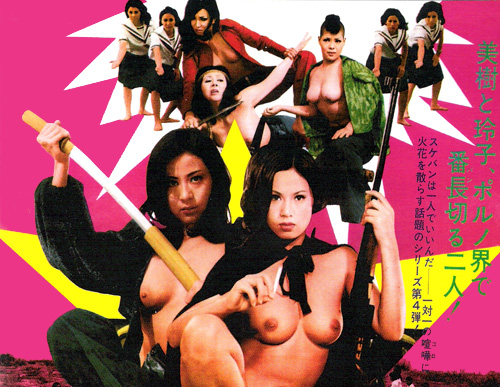 By: KamuiX
By: KamuiX
Since this is meant to be an introduction piece, directed towards those not familiar with the Pinky Violence genre, I should get a certain preconceived notion out of the way first: this stuff isn’t porno. It’s not even softcore. Yes, there’s the occasional sex scene and plenty of topless women to go around, but the intention of the genre is something altogether 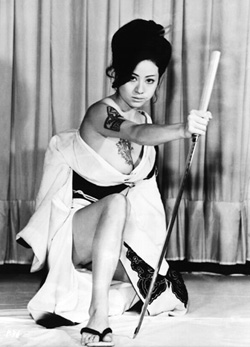 different. When it comes to porn, whether it be softcore or otherwise, the main intention of the film is to get from one sex scene to the next. Pinky Violence is not about that whatsoever. Yes, a woman being raped or sexually assaulted may very well drive the plot forward, but it’s in no way indicative of what the overall film is trying to accomplish. No, Pinky Violence is all about women kicking ass in every way imaginable; whether they’ve been wronged and are looking for revenge or just part of a bad ass gang of chicks looking to keep a hold on their turf, the films are all about showing how deadly a woman can truly be. different. When it comes to porn, whether it be softcore or otherwise, the main intention of the film is to get from one sex scene to the next. Pinky Violence is not about that whatsoever. Yes, a woman being raped or sexually assaulted may very well drive the plot forward, but it’s in no way indicative of what the overall film is trying to accomplish. No, Pinky Violence is all about women kicking ass in every way imaginable; whether they’ve been wronged and are looking for revenge or just part of a bad ass gang of chicks looking to keep a hold on their turf, the films are all about showing how deadly a woman can truly be.
While Pinky Violence films can be traced back from a few years before 1970, with films like Yoshihiro Ishikawa’s excellent Female Demon Ohyaku and the Red Peony Gambler series starring the lovely Junko Fuji, the true dawn of the genre was indeed the early 70’s. The biggest inspiration to the genre was the sexually charged Pinku Eiga films of the 60’s and the budding ultra-violent Jitsuroku Eiga facet of the Yakuza film. For those not “in the know”, the Jitsuroku Eiga style of Yakuza film dealt with much more realistic and modern subject matter. A polar opposite to the Ninkyo Eiga style, which dealt with honor and respect and often took place in an older time where the characters were clad in Kimono’s, the Jitsuroku Eiga took place in modern times and were often based on true events, showing the dirty underbelly of the gangster world.
While this style of film was banking big bucks, as well as getting people back into theatres in a time where most were content to stay home and watch TV, so were the lurid sexual fantasies of the Pinku Eiga films, which often showed women being taken advantage of, raped, and altogether degraded. Featuring lots of perverse and deviant elements, the Pinku Eiga genre whetted the appetite of many in Japan, as it was something completely new, considering that up until the early 60’s, nary a kiss and hug was permitted to be shown in films made in Japan. In the late 60’s, rebel filmmaker Teruo Ishii unleashed a series of films under the title “The Joys of Torture”. These films were quite nasty and unforgiving, featuring all sorts of evil deeds done to poor, unsuspecting women. And they made money; a lot of it. The studios took note; if violent gangster films and sexed-up torture pictures banked a bunch of cash and got asses back into the theatre, imagine the money that could be made if the genres were combined! Thus, Pinky Violence was born.
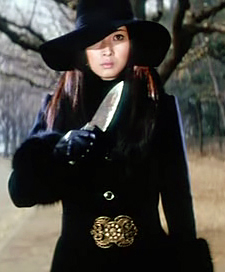
As already stated, to those that have never experienced a Pinky Violence film, they’re not exactly what you’ve been lead to believe. The naked women and the over-the-top violence was there to attract an audience, but behind the veneer of sex and bloodshed lies some interesting, dare I say “classy”, aspects. When you think of sex films, you think of nothing more than smut; cheaply made drivel, whose only purpose is to film lewd acts and pack as much offensive material in its runtime as possible. This is a misconception of the Pinku Eiga films of the 1960’s, which the Pinky Violence genre evolved from. The films of directors such as Koji Wakamatsu, Tetsuji Takechi, Shinya Yamamoto, and Seiichi Fukuda all came from the Japanese New Wave, thus the films are infused with heaps of arthouse flare and social commentary; these are incredibly unique films you won’t find anywhere else. Many of these characteristics carried over into the emerging Pinky Violence genre, as did some of their directors. Kô Nakahira, who made a name for himself in the New Wave of Japanese cinema with films like Crazed Fruit, went on to direct the first two films in the Rica trilogy. Due to this, the films never look cheap, and look much more polished than you would expect from the exploitation genre. Many feature audacious lighting, much like Mario Bava used in his films of the 60’s, and wildly inventive set designs. The color palette used in many of the films is reminiscent of an Andy Warhol panting come to life; truly, the artistry of the filmmaking itself will often indulge your senses as much as the nudity!
Many of the films also contained commentary on post-war Japan, criticizing the American Military occupation of the country. More-so than that, this is an entire genre of film that probably would have never existed if the events of World War II hadn’t transpired. While I doubt anyone in Japan would ever feel the war itself was a good thing, it was the catalyst that caused Japanese women to become “free”; free to vote, free to choose who they’d like to marry, and free to explore any educational and occupational opportunities they wanted. Thus, a film genre where women were given full-reign to show just how powerful and independently able they are is something we may have never seen otherwise.
But enough about the roots of Pinky Violence…what about the films themselves? There are generally two distinct facets of the genre. The first deals with a woman that has been wronged and is seeking revenge or redemption, examples being  Lady Snowblood, the Female Prisoner Scorpion series, Female Demon Ohyaku, Sex & Fury, and Zero Woman: Red Handcuffs. These films often tend to be serious in tone, and at times more “hard” and unforgiving. These are also the films that generally are frowned upon by those that don’t fully understand the genre; while the protagonists ultimately command the screen more effectively than many of their male counterparts could, they are oftentimes put through hell to get there. The women are avenging terrible misdeeds done against them, and being of the exploitation ilk, the films generally aren’t afraid to show these misdeeds in stark detail. While these films almost always end by completely empowering the woman, many still seem to find them chauvinistic, and even believe that these films are enjoyed by their fans because of these elements. While I can’t speak for everyone, I would say that for the majority, this is altogether false. Lady Snowblood, the Female Prisoner Scorpion series, Female Demon Ohyaku, Sex & Fury, and Zero Woman: Red Handcuffs. These films often tend to be serious in tone, and at times more “hard” and unforgiving. These are also the films that generally are frowned upon by those that don’t fully understand the genre; while the protagonists ultimately command the screen more effectively than many of their male counterparts could, they are oftentimes put through hell to get there. The women are avenging terrible misdeeds done against them, and being of the exploitation ilk, the films generally aren’t afraid to show these misdeeds in stark detail. While these films almost always end by completely empowering the woman, many still seem to find them chauvinistic, and even believe that these films are enjoyed by their fans because of these elements. While I can’t speak for everyone, I would say that for the majority, this is altogether false.
In contrast, the other side of the genre is generally less serious in tone, and much more playful. These films often deal with girl gangs, which are either fighting rival gangs to protect their turf, or taking down Yakuza and organized crime. It’s here that many elements of the Jitsuroku Eiga style of Yakuza film come into play, yet they often are less gritty than their inspiration, and occasionally even paint the Yakuza as bumbling idiots. Some of the more popular examples include the Girl Boss series, the Stray Cat Rock series, and the Delinquent Girl Boss series.
Pinky Violence isn’t stuck amidst these defined elements however; some of the films incorporate horror elements (Blind Woman’s Curse, Terrifying Girls' High School: Lynch Law Classroom), Samurai period-pieces (Bohachi: Clan of the Forgotten Eight), 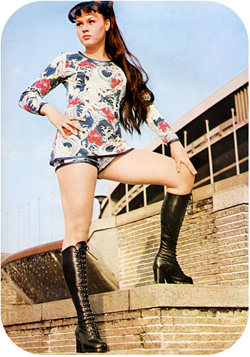 slapstick comedy (the Hot Springs Geisha series), and even Nunsploitation (the awesome School of the Holy Beast). Like any well-defined genre, Pinky Violence did its fair-share of branching out and experimenting with melding different styles of film. slapstick comedy (the Hot Springs Geisha series), and even Nunsploitation (the awesome School of the Holy Beast). Like any well-defined genre, Pinky Violence did its fair-share of branching out and experimenting with melding different styles of film.
A staple you’ll find in many of these films are winding, intricate plotting. I personally believe it was the writers and directors way of attempting to prove that the films were about more than tits and blood. A novice may find viewing some Pinky Violence films a daunting task, with multiple plot threads weaving their way through the film at once and an abundance of characters to keep track of. Many times though, the viewer will be justly rewarded by the end, with many plot points converging and finally making sense. It’s something that a fan will surely note as one of the charms of the genre, and something that you’ll quickly get used to if you persist at digging deeper into the wealth of Pinky goodness! Another constant through the films is that many of them feature soundtracks performed by the actresses themselves. This isn’t exactly shocking to anyone versed in Japanese cinema, where many a pop star pulls double-duty as actors, but it is unique that so many films in one particular genre have this component; everyone from the big stars like Meiko Kaji, Miki Sugimoto, and Reiko Ike, to the smaller ones like Rika Aoki, all get in on the singing action.
Like any genre created by a certain movement in history, it just couldn’t last forever. By the late 70’s, studios had mostly abandoned the Pinky Violence genre. There was still money to be made in the Pinku Eiga genre, and many of the directors, such as Norifumi Suzuki and Yasuharu Hasabe took their talents in that direction. While the genre may have died, its impression was a lasting one. In Japan, the 90’s home video market boom inspired many direct-to-video re-imaginings of series like Zero Woman and Female Prisoner Scorpion; Sweden saw the likes of They Call Her One Eye and Indonesia was serving up Virgins from Hell; the 42nd Street Grindhouses were swamped with films like Ms. 45 and Chained Heat; and to this day, the films’ influence is felt through directors like Quentin Tarantino and Takashi Miike. Clearly a genre that had nothing more to present than naked woman, heaps of sex, and unbridled brutality could inspire so many…and that’s because Pinky Violence had MUCH more to offer. For those of you that have always been under that wrong assumption, there’s no better time than now to re-evaluate the pleasures of Pinky Violence.

Much like the common themes that many Pinky Violence films deal with, you’ll also soon see a lot of familiar faces once you begin to cut your teeth on these films. Just like horror has its “Scream Queens”, Pinky Violence had its fare share of cult sirens that made their name through multiple roles throughout the genre.

|
Meiko Kaji
First PV Appearance: Stray Cat Rock: Delinquent Girl Boss
Meiko Kaji began her acting career under her birth name, Masako Ota, with Nikkatsu studios, but was stuck in menial roles and gained little success. When Nikkatsu offered her a starring role in a proposed biker gang film called Stray Cat Rock, she changed her name to Meiko Kaji, and went on to star in 5 of the films, as well as star in the first amalgamation of Pinky Violence and horror, Teruo Ishii's Blind Woman's Curse. When Nikkatsu decided to go hard and heavy into the Roman Porno line of films, a rather harsh facet of the Pinku Eiga genre, Kaji jumped ship to rival Toei studios. It was the move that would make her a star. It was at Toei where she was given her most recognizable role, Nami Matsushima, or Matsu the Scorpion, in the Female Prisoner Scorpion series, of which she headlined 4. Not resting on her laurals, she went on to star in the wildly influential Lady Snowblood while still working on the Scorpion films, as well as starring in it's sequel Love Song of Vengeance. The move to Toei also created a successful singing career for Kaji, as she sang the title tracks to both the Scorpion series and Lady Snowblood; to this day, there's still interest in her music, as evidenced by her work being featured in Tarantino's Kill Bill films. Currently, she's still at work in Japan, starring mostly in Japanese Drama series. Other notable Meiko Kaji PV films: Wandering Ginza Butterfly, Wandering Ginza Butterfly: She-Cat Gambler, Jeans Blues
|
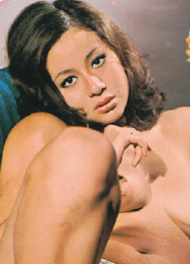
|
Reiko Ike
First PV Appearance: Hot Springs Mimizu Geisha
Reiko Ike started her career off with a bang, claiming that she lied about her age to gain her role in Hot Springs Mimizu Geisha, and was actually only 16 at the time of filming. This created a media storm, and caused Ike's star to rise in the film world, as we well as the musical one, in which she released an album in 1971. Ike would go on to headline the most popular of the "delinquent girl gang" style of films with the Girl Boss series, in which she starred in 5 of the 7 films. She also starred in all 4 Terrifying Girls' High School films, but her stand-out role was as Ochô Inoshika, a pickpocket gambler in the Meiji period looking to avenge her fathers death, in Sex & Fury, and its sequel Female Yakuza Tale. It was in this role where she was given the most screen time to shine without being involved in a gang of bad girls, and she made the most of it. Her screen presence and bad girl attitude can be compared to that of Tura Satana as Varla in Faster, Pussycat! Kill! Kill!, and Pam Grier as Coffy and Foxy Brown. Ike retired from show business in the late 70's due to legal troubles, but her mark on the genre will never be forgotten. Other notable Reiko Ike PV films: Criminal Woman: Killing Melody, Modern Porno Tale: Inherited Sex Mania, Lustful Shogun & His 21 Mistresses, The Red Silk Gambler
|

|
Miki Sugimoto
First PV Appearance: Hot Springs Mimizu Geisha
Miki Sugimoto started her career as a model and television actress, before making her film debut in Hot Springs Mimizu Geisha alongside Reiko Ike. It must have been fate that brought them together, as they would go on to star in many films together. Miki herself starred in 5 of the films from the Girl Boss series (4 of which were with Ike), and 2 of the films from the Terrifying Girls' High School series. She also starred with Ike in Criminal Woman: Killing Melody, and like the previous actresses mentioned, she too was given a huge role in which to shine, as Rei in Zero Woman: Red Handcuffs, arguably one of the most sex-filled and violent films to every grace the genre. Sugimoto retired in the late 70's to focus on married life, and went on to become a nursery school teacher. Other notable Miki Sugimoto PV films: Hot Springs Kiss Geisha, Tokugawa Sex Ban: Lustful Lord, Lustful Shogun & His 21 Mistresses
|
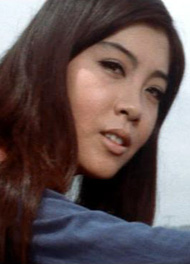
|
Reiko Oshida
First PV Appearance: Quick-Draw Okatsu
Reiko Oshida is much less proficient in the PV genre as her contemporaries, but she still made a mark with her cute face and endearing demeanor. Her first exposure to Pinky Violence was in a small role in Nobuo Nakagawa's Quick-Draw Okatsu. Toei studios saw something here, and cast her as the lead in the Delinquent Girl Boss series, in which she starred in all 4 films. Like her peers, she also had a brief career as a J-Pop star; unlike them, Oshida was never filmed nude, nor found herself in many provocative situations. Oshida weathered the demise of Pinky Violence, sporadically appearing in films to this day.
|

Like any good exploitation genre, the period in which Pinky Violence was hot produced a staggering amount of films. When Nikkatsu decided to go into a more depraved realm of sex films, Toei studios picked up the blueprint started with the Stray Cat Rock series and perfected the style down to an art. Toei really had no shame in cashing in on an already recognizable "title" to put asses in the seats. The original Stray Cat Rock film had the subtitle of "Delinquent Girl Boss", which Toei then used for an entire series of films. Likewise, Toei featured films and series that closely mirrored one another in name to draw in fans of the previous films. Keeping track of which films go where is a daunting task for those new to Pinky Violence. Hopefully, this guide will be of assistance. It's in no way complete; there are so many films unreleased outside of their initial theatrical runs that it's close to impossible to pinpoint them all, but I've done my best.
Notes: I've grouped this section into series first, and then I'll cronologically go down the rest. I've included some here that some may find questionable, but I believe they feature enough elements to be included, and they're often mentioned alongside the rest. Films available on retail DVD with English subtitles will be highlighted with pink text, although not all highlighted are available on R1 in the US.

|
Female Prisoner Scorpion (Toei)
Female Prisoner #701: Scorpion (1972) - Dir: Shunya Ito
Female Prisoner Scorpion: Jailhouse 41 (1972) - Dir: Shunya Ito
Female Prisoner Scorpion: Beast Stable (1973) - Dir: Shunya Ito
Female Prisoner Scorpion: Grudge Song (1973) - Dir: Yasuharu Hasebe
New Female Prisoner: #701 Scorpion (1976) - Dir: Yutaka Kohira
New Female Prisoner Scorpion: Special Cell Block X (1977) - Dir: Yutaka Kohira
|
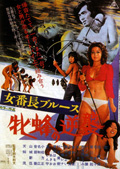
|
Girl Boss (Toei)
Girl Boss Blues: Queen Bee's Counter Attack (1971) - Dir: Norifumi Suzuki
Girl Boss Blues: Queen Bee's Challange (1972) - Dir: Norifumi Suzuki
Girl Boss Guerilla (1972) - Dir: Norifumi Suzuki
Girl Boss Revenge (1973) - Dir: Norifumi Suzuki
Girl Boss: Escape from Reform School (1973) - Dir: Sadao Nakajima
Girl Boss: Diamond Showdown (1974) - Dir: Ikuo Sekimoto
Girl Boss: Crazy Ball Game (1974) - Dir: Ikuo Sekimoto
|
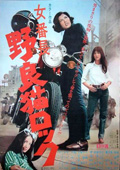
|
Stray Cat Rock (Nikkatsu)
Stray Cat Rock: Delinquent Girl Boss (1970) - Dir: Yasuharu Hasebe
Stray Cat Rock: Wild Jumbo (1970) - Dir: Toshiya Fujita
Stray Cat Rock: Sex Hunter (1970) - Dir: Yasuharu Hasebe
Stray Cat Rock: Machine Animal (1970) - Dir: Yasuharu Hasebe
Stray Cat Rock: Beat '71 (1971) - Dir: Toshiya Fujita
|
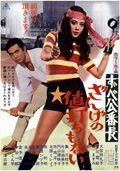
|
Delinquent Girl Boss (Toei)
Delinquent Girl Boss: Blossoming Night Dreams (1970) - Dir: Kazuhiko Yamaguchi
Delinquent Girl Boss: Tokyo Drifters (1970) - Dir: Kazuhiko Yamaguchi
Delinquent Girl Boss: Ballad of Yokohama Hoods (1971) - Dir: Kazuhiko Yamaguchi
Delinquent Girl Boss: Worthless to Confess (1971) - Dir: Kazuhiko Yamaguchi
|
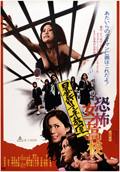
|
Terrifying Girls' High School (Toei)
Terrifying Girls' High School: Women's Violent Classroom (1972) - Dir: Norifumi Suzuki
Terrifying Girls' High School: Lynch Law Classroom (1973) - Dir: Norifumi Suzuki
Terrifying Girls' High School: Delinquent Convulsion Group (1973) - Dir: Masahiro Shimura
Terrifying Girls' High School: Animal Courage (1973) - Dir: Masahiro Shimura
|
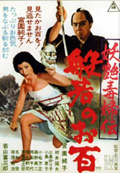
|
Legends of the Poisonous Seductress (Toei)
Female Demon Ohyaku (1968) - Dir: Yoshihiro Ishikawa
Quick-Draw Okatsu (1969) - Dir: Nobuo Nakagawa
Okatsu the Fugitive (1969) - Dir: Nobuo Nakagawa
|
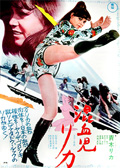
|
Rica (Toho)
Rica: The Mixed-Blood Girl (1972) - Dir: Kô Nakahira
Rica 2: Lonely Wanderer (1973) - Dir: Kô Nakahira
Rica 3: Juvenile's Lullaby (1973) - Dir: Kozaburo Yoshimura
|
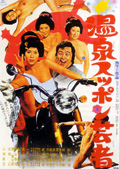
|
Hot Springs Geisha (Toei)
Hot Springs Massage Geisha (1969) - Dir: Teruo Ishii
Hot Springs Devil-Tongue Geisha (1970) - Dir: Sadao Nakajima
Hot Springs Mimizu Geisha (1971) - Dir: Norifumi Suzuki
Hot Springs Kiss Geisha (1972) - Dir: Norifumi Suzuki
|
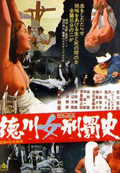
|
The Joys of Torture (Toei)
Shogun's Joy of Torture aka Female Punishment of the Tokugawa (1968) - Dir: Teruo Ishii
Tokugawa: Woman Genealogy (1969) - Dir: Teruo Ishii
Inferno of Torture aka Hell's Tattooers (1969) - Dir: Teruo Ishii
Orgies of Edo (1969) - Dir: Teruo Ishii
Shameless: Abnormal and Abusive Love (1969) - Dir: Teruo Ishii
Love and Crime (1969) - Dir: Teruo Ishii
Yakuza's Law (1969) - Dir: Teruo Ishii *Included for completion reasons only - not PV
Bohachi Bushido: Code of the Forgotten Eight (1973) - Dir: Teruo Ishii
|
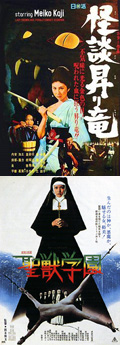
|
Various
Horrors of Malformed Men (1969) - Dir: Teruo Ishii
Blind Woman's Curse (1970) - Dir: Teruo Ishii
Girl's Junior High School: Bad Habit (1970) - Dir: Mio Ezaki
Girl's Junior High School: Trouble at Graduation (1970) - Dir: Yukihiro Sawada
Girl's Junior High School: Too Young to Play Like This (1971) - Dir: Akira Kato
Bad Girl Mako (1971) - Dir: Koreyoshi Kurahara
Wandering Ginza Butterfly (1971) - Dir: Kazuhiko Yamaguchi
Modern Porno Tale: Inherited Sex Mania (1971) - Dir: Norifumi Suzuki
Tokugawa Sex Ban: Lustful Lord (1972) - Dir: Norifumi Suzuki
Wandering Ginza Butterfly: She-Cat Gambler (1972) - Dir: Kazuhiko Yamaguchi
The Red Silk Gambler (1972) - Dir: Teruo Ishii
Lustful Shogun & His 21 Mistresses (1972) - Dir: Norifumi Suzuki
Sex & Fury (1973) - Dir: Norifumi Suzuki
Lady Snowblood (1973) - Dir: Toshiya Fujita
Bankaku Rock (1973) - Dir: Makoto Naito
Female Yakuza Tale (1973) - Dir: Teruo Ishii
Criminal Woman: Killing Melody (1973) - Dir: Atsushi Mihori
Jeans Blues (1974) - Dir: Sadao Nakajima
School of the Holy Beast (1974) - Dir: Norifumi Suzuki
Lady Snowblood 2: Love Song of Vengeance (1964) - Dir: Toshiya Fujita
Zero Woman: Red Handcuffs (1974) - Dir: Yukio Noda
Hells Angels: Crimson Roar (1977) - Dir: Makoto Naito
|
Please feel free to discuss the Pinky Violence genre here, in our forums!
|
|
|

